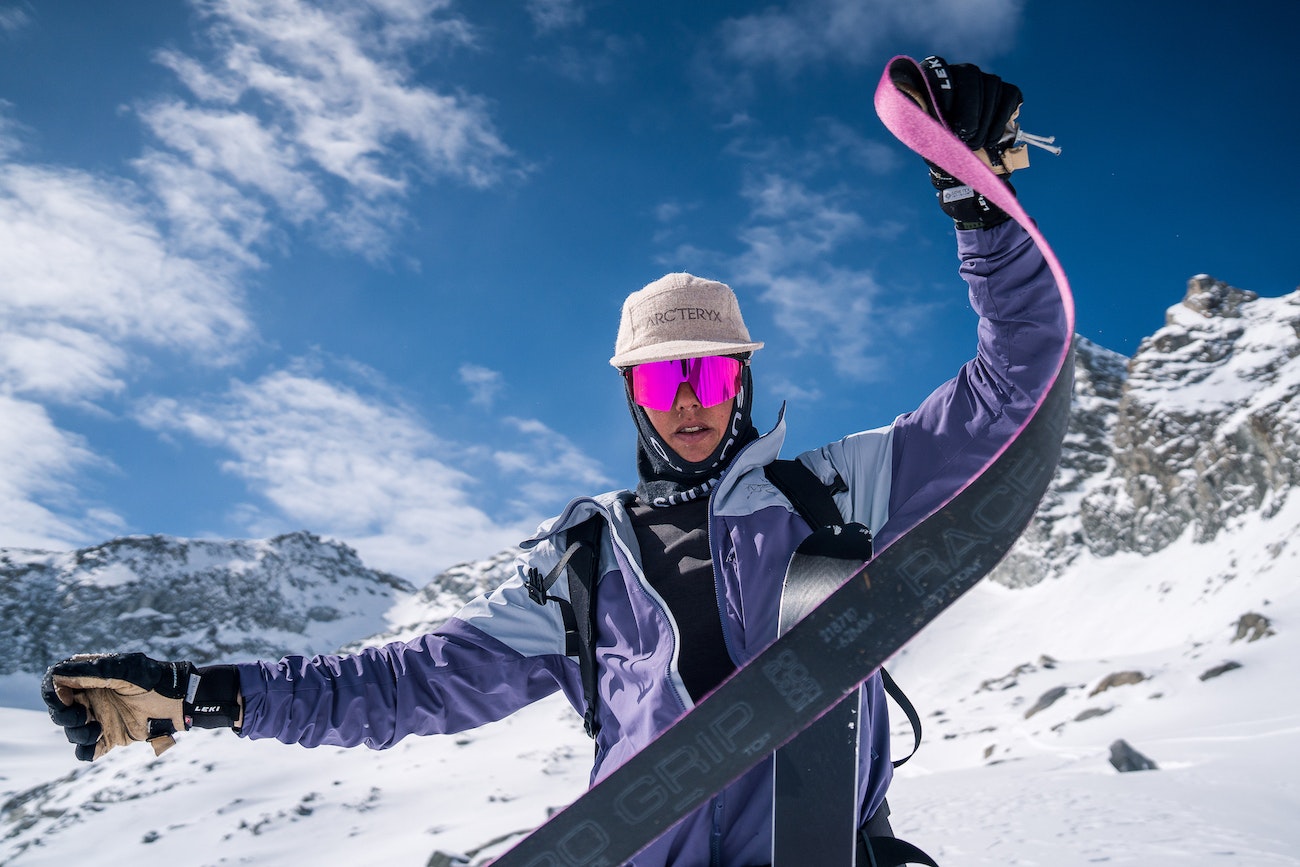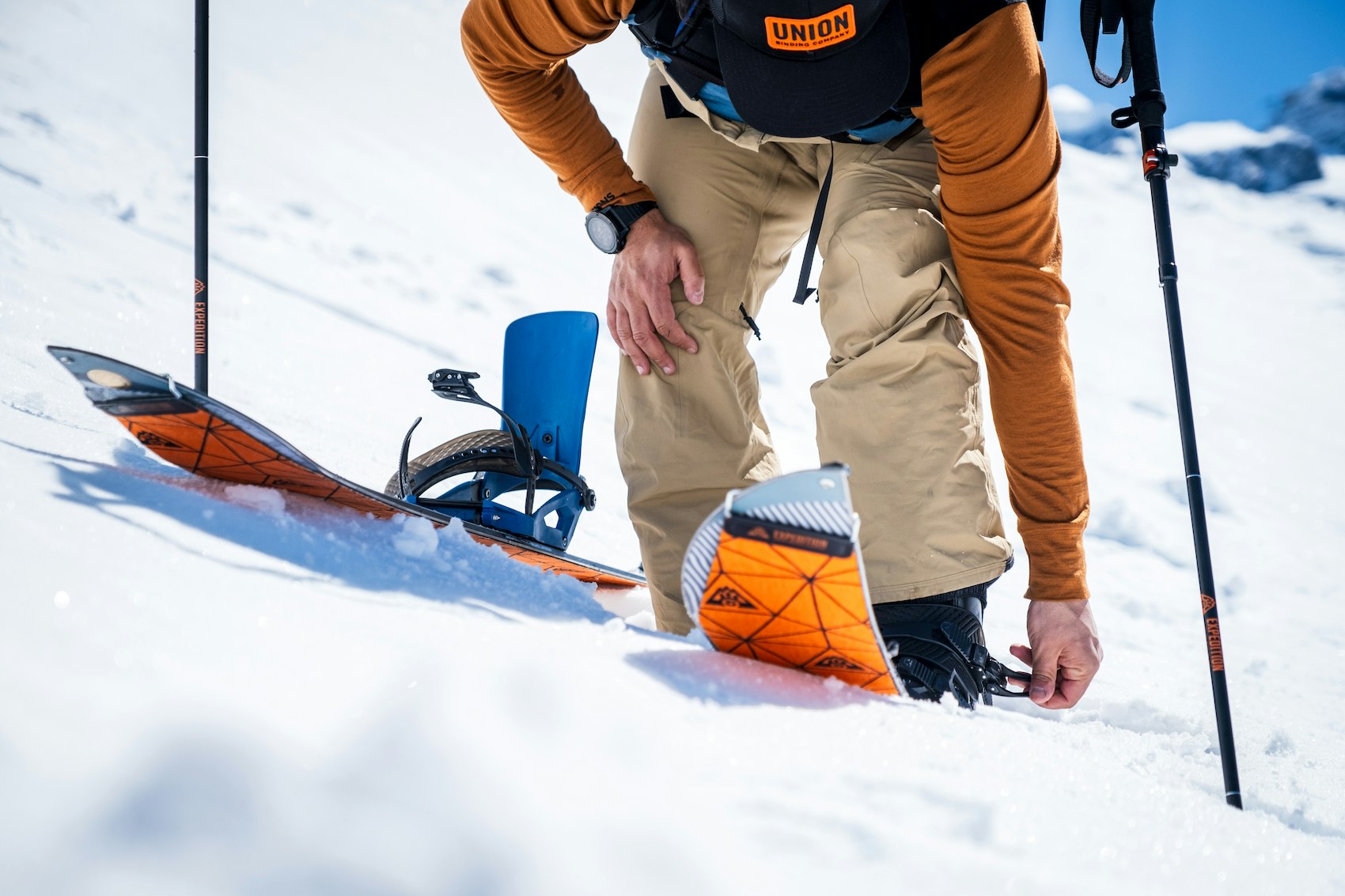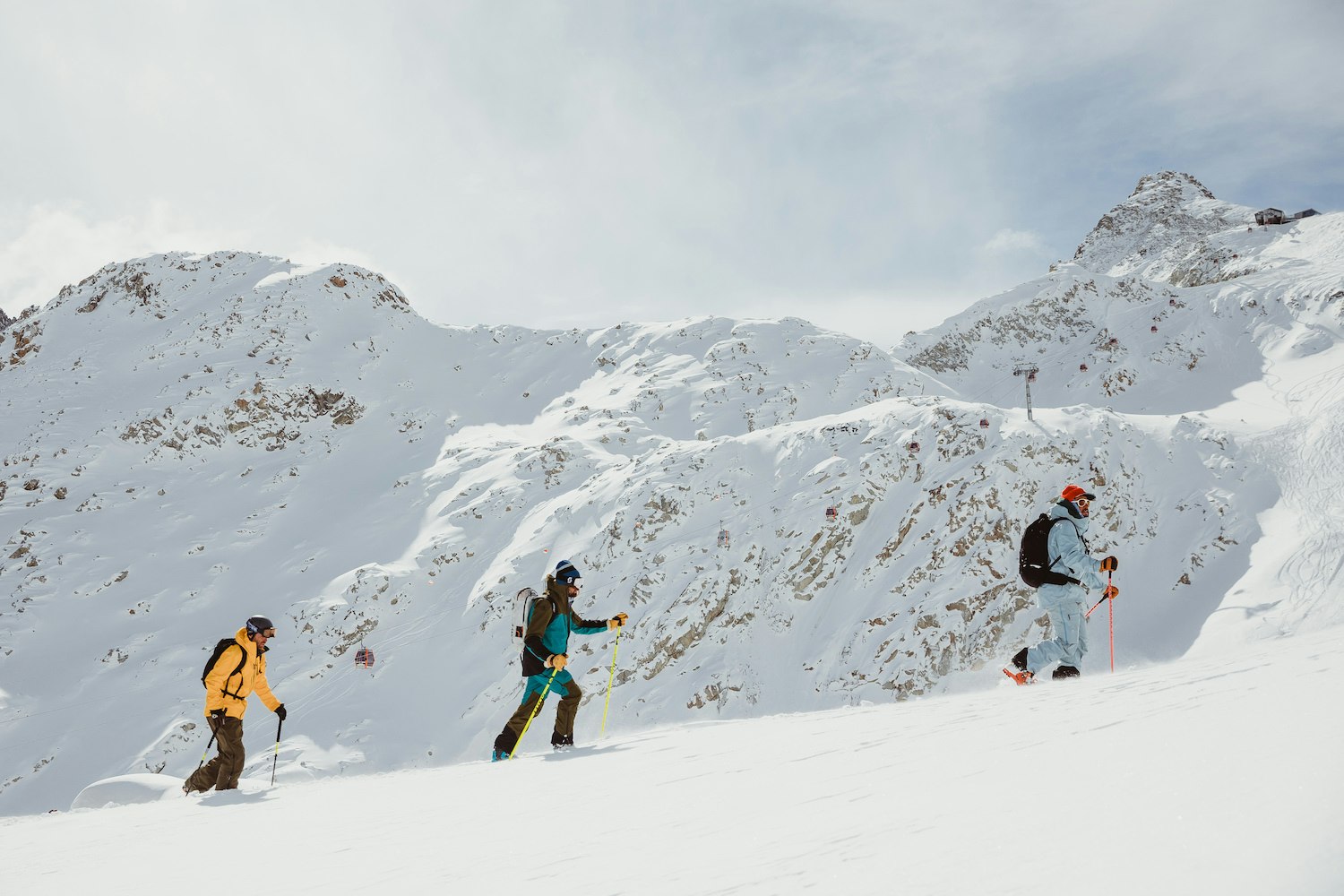It’s not just about grip
Everything you need to know about skins
- Author: Michele Guarneri
- Photographer: Giovanni Danieli
the more time you spend in the mountains, the more you should be investing in a reliable product.
And it’s not just about grip. Glide is important, too. Because all skins give you grip if they’re used properly. Newcomers to skimo worry less about glide, but it’s a factor you should think about even if you’re new to the sport, because it makes the climbing motion more fluid as you take the next of countless thousands of steps forward up the slope. When picking your skins, you need to consider the materials used and the adhesive. The plush of skimo skins can be made of Angora-goat mohair, nylon (so synthetic), or some combination of these materials. Adhesives can be hot-melt, gel, or a hybrid.
Full mohair: maximum glide after a breaking-in period
Mohair is lighter than synthetic fiber or a mohair mix because it’s very fine and hollow in the center. It tends to regain its original orientation more easily after an outing and glides faster as well. But... it needs to be broken in to achieve maximum performance, unlike nylon or “mo-mix” skins, which are ready out of the box. You’ll note the advantages of mohair most in powder or other cold, soft snow, but they wear out faster than nylon or blends. They offer less grip at a touring or freeride pace, but this is less of a factor at higher, race speeds. Mohair skins can easily be hot waxed, which in part makes the fabric base more water resistant, a benefit that increases with continued use even on skins with laser-cut edges. Typical use cases: racing, sport or fast-and-light touring, expert users, upgrade for heavier tourers and freeriders. Lightweight backup skins.

Full nylon: greater durability at the expense of maximum glide
Unlike mohair, nylon is not hollow in the center. It’s also thicker for a denser plush. This makes synthetic skins heavier than full mohair. They give you the most grip but the least glide. If nylon plush loses its original orientation, it tends to stay that way. It can be hot waxed at lower temperatures (using soft waxes), but the wax doesn’t bind with the plush or saturate the fabric base. Synthetic skins cost less than full mohair. Typical use cases: high, slow freeride routes with no glide, range of motion only forward, high heel lifts; entry-level or infrequent ski tourers.

Mo-mix: the best compromise
With mixes that range from 65-70% mohair to 30-35% nylon, “mo-mix” skins give you the best of both worlds in terms of grip (in particular), glide and durability. They are slower than broken-in mohair, but faster than full nylon, and, most importantly, will last for more seasons for the average ski mountaineer. They can be hot waxed, but it takes a bit of skill (as well as soft waxes, lower temperatures, and cooling periods between each section of the skin ironed). However, there are specific products that are applied cold. Typical use cases: highly versatile for touring, freeriding, frequent light touring, mountain goats who love to climb. They’re more forgiving of technical deficiencies.

Share this article

